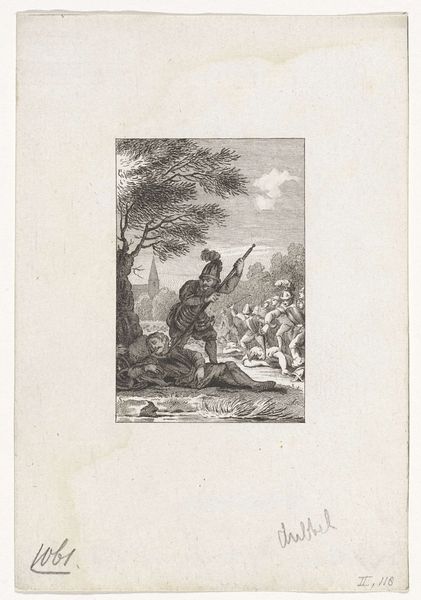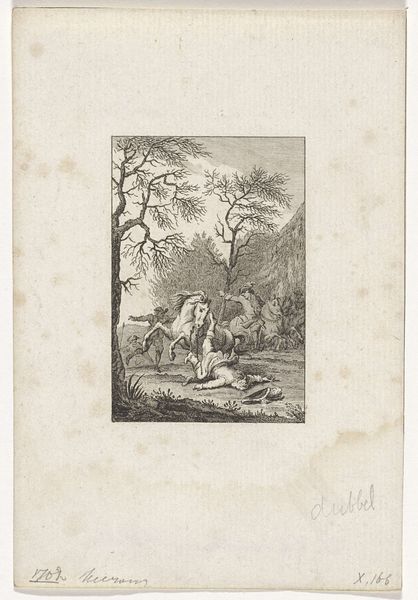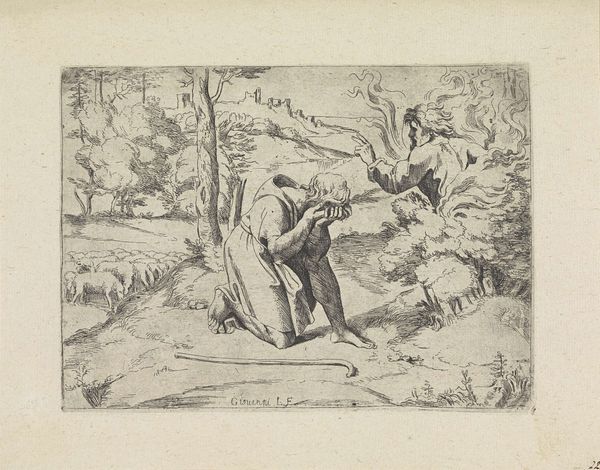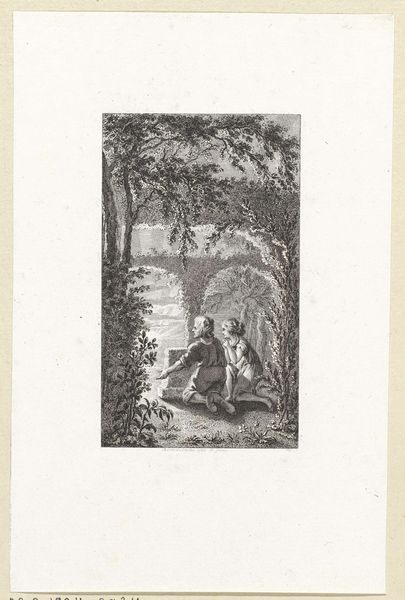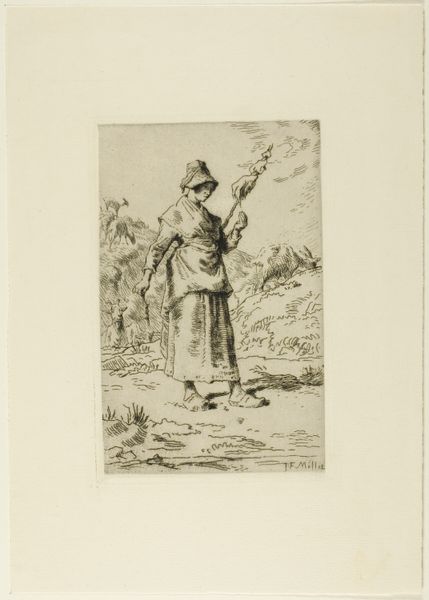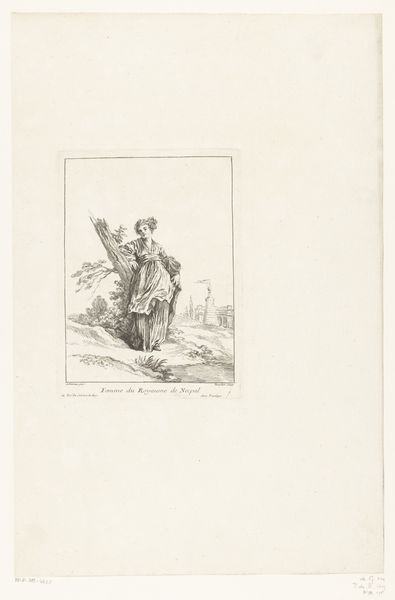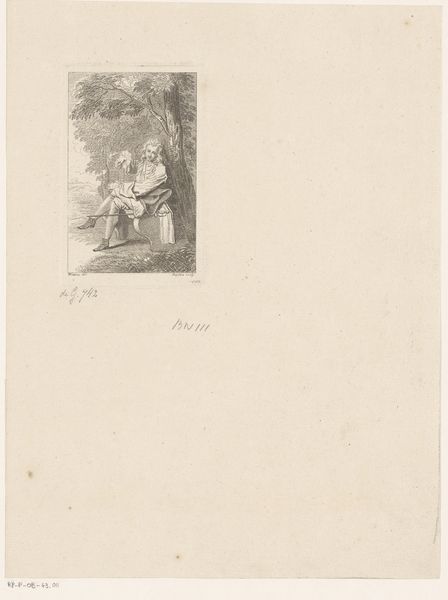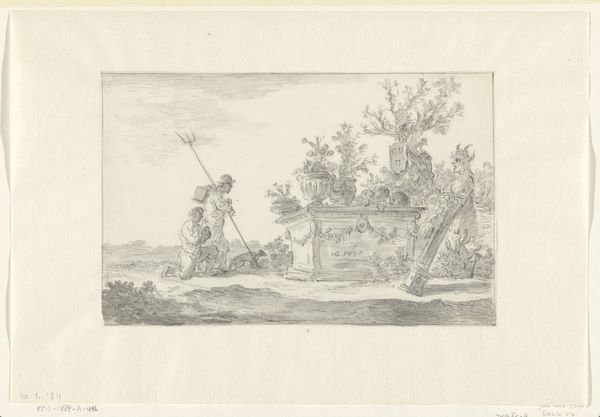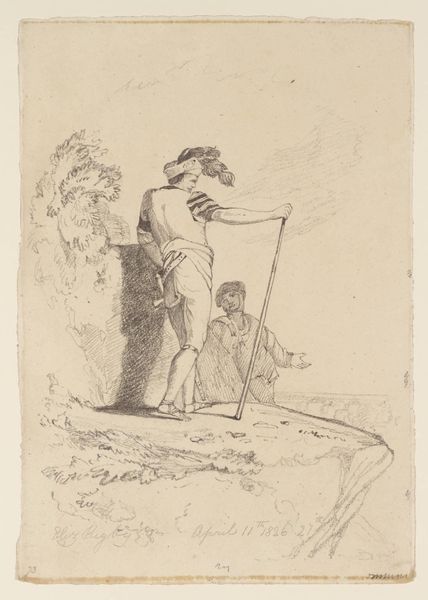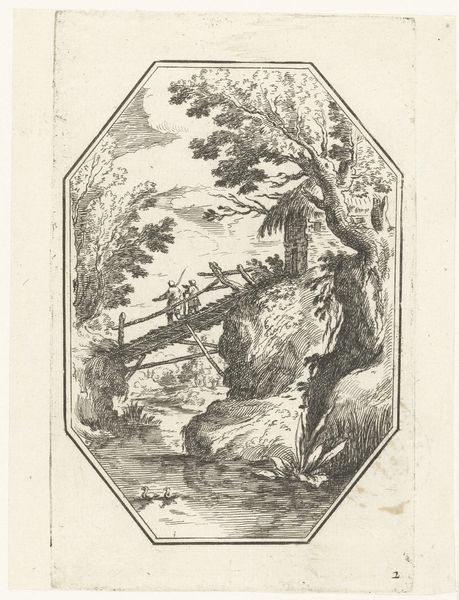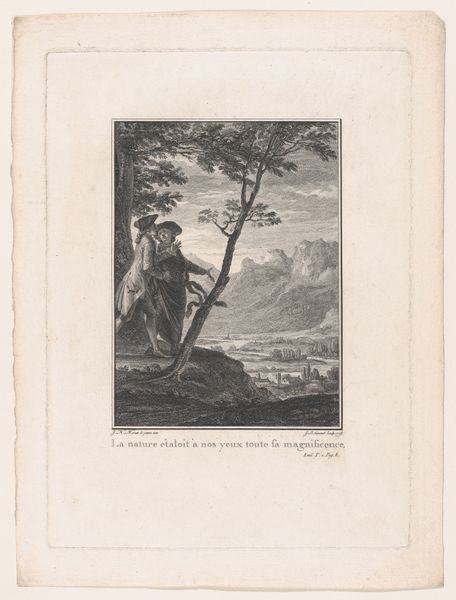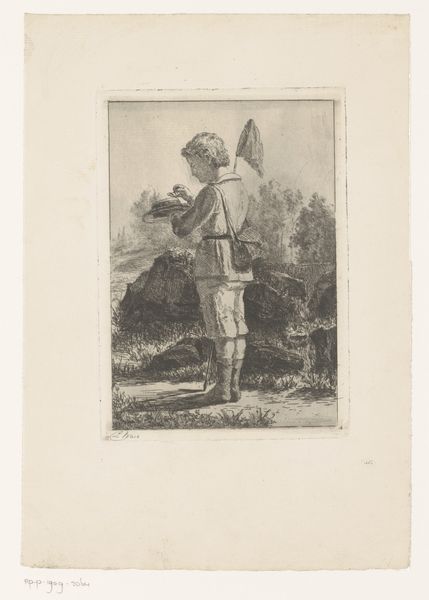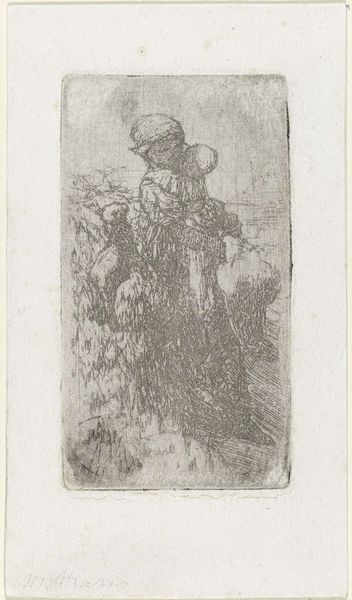
drawing, print, etching
#
drawing
# print
#
etching
#
landscape
#
figuration
#
line
Dimensions: height 61 mm, width 42 mm
Copyright: Rijks Museum: Open Domain
Curator: What a subtly rendered etching! The Rijksmuseum holds this print called "Hengelaar", attributed to Leendert Brasser, made sometime between 1727 and 1793. Editor: It’s melancholic. That solitary figure fishing, the muted tones—it evokes a quiet sense of longing, doesn’t it? A pastoral elegy. Curator: Indeed. Brasser’s technique here is fascinating. Look at the economical use of line to define form. The hatching creates a sense of depth, particularly around the figure and the distant village. Notice how the tree seems to arch protectively over him. The interplay between positive and negative space generates visual interest, too. Editor: The fishing rod extends as this linear connection. Is the figure a literal fisherman or might this act symbolize something more? Fishing as seeking, perhaps for knowledge, or a soul. This lone man set against this simple setting... it whispers stories about simple pleasures and introspective reflection. Even that far-off church implies moral virtue. Curator: Certainly, that steeple points the composition upwards to the spiritual level. You are making interesting claims, especially given the limitations of the medium. Etching tends to prioritize linear precision over tonal nuances. The composition leads us to an upward gaze; there is undeniable clarity of design despite being limited in greyscale and shade. Editor: Perhaps it's about that inherent lack that emphasizes reflection. How little does he hold in order to find deeper meaning? Think about what this image represents – the eternal search for purpose amidst the simple pleasures of a landscape. It seems a meditation on human nature and belonging. Curator: I still focus on the use of the "Line". He outlines, emphasizes and repeats, allowing viewers to come up with conclusions about shape on their own, as opposed to providing details in "shade", to evoke more conclusive emotional reactions. It may just be my preferences. Editor: Perhaps our interpretations only serve to reveal how strongly we hold onto different ideas. Regardless, a work such as this deserves exploration by generations to come! Curator: Indeed, it stands testament to artistic simplicity of that time. A humble treasure, if I may say so myself.
Comments
No comments
Be the first to comment and join the conversation on the ultimate creative platform.
